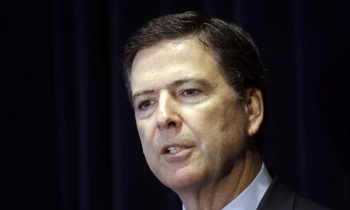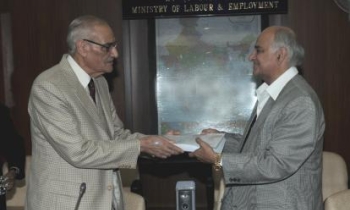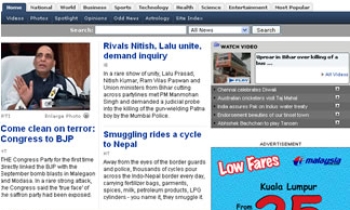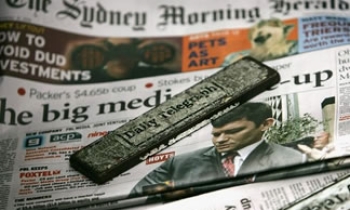Alan Rusbridger, editor of the Guardian (and editor-in-chief of The Observer), thumbs through a battered volume by CP Scott, the architect of the newspaper that tomorrow embarks on arguably the most radical - and certainly the most expensive - relaunch in its 184-year history.
He reads: 'The editor and the business manager should march hand in hand,' and then adds: 'and that's how it was, largely. Myself, the board of Guardian Newspapers [GNL], Guardian Media Group, the Scott Trust, we agreed this was the way to do it. And I think we'll be proved right.'
Carolyn McCall, chief executive of GNL, agrees; 'I'm very happy with the way the editorial and commercial side have been so collaborative. It was an editorially inspired concept that made commercial sense from a very early stage.'
The concept which Rusbridger prefers to calls a 'reformatting' but the marketing men are calling the 'new' Guardian, is the unusually sized paper that will hit the streets tomorrow in an advertising whirlwind and the hope of an immediate hike in readership.
It has been known throughout most of its time on the drawing board as 'the Berliner' (after the German paper that uses the same format) or 'project Kennedy' by the more discreet and historically minded within the newspaper's London offices. From tomorrow its fate is a simple matter of readership opinion.
It is also, as some critics point out, one of the biggest gambles any newspaper group has taken in the 20 years, since Rupert Murdoch changed the economics of the industry with his dash to Wapping.
One seasoned newspaper watcher observed: 'The Guardian has taken a big risk on a completely new design in a very difficult, mature market. They lack the element of surprise - the competition has known this is coming for the past year. They've spent an awful lot of money on state-of-the-art printing, but with all the technology risks that involves. I call that putting all your eggs, and your bacon too, in one basket.'
Rusbridger and McCall are aware of those risks, but have lived with them for 18 months. They agree, however, that it was the launch of the compact Independent nearly two years ago that forced them to go for the radical option.
'We could have gone for a tabloid Guardian straight away,' says McCall. 'That was the easy option. We pioneered quality tabloid journalism with G2, and the technology was there. But we all felt that was not in the tradition of the Guardian. We are an innovative organisation, and we pride ourselves on being first with new ideas. So it was deeply irritating that the Indy changed shape first.
'There was a six- or seven-week period after the Indy when the commercial pressure was to go tabloid, but we resisted that temptation. We sat down and talked, and decided that we had to aim high.'
Rusbridger takes up the theme: 'Of course we knew we were in a market that was changing shape very fast - the internet, free papers, tabloids. Some of these ways are more subtle than others, but they are all profound. It would have been wrong to react too quickly.
'The important thing - and this is still how I would measure the success of the Berliner - is what sort of newspaper we want to produce. We have to be true to Guardian ideals and traditions. It would have been a mark of failure if we had been stampeded into something that was not worthy of our readers, and this is what a tabloid would have done. But I also think that we have done something that will sell more copies and be more successful commercially.'
The commercial and financial considerations are significant, as McCall explains. She puts the total investment in new plant and equipment at £80 million, made up of £50m for new presses from German engineer Man Roland, and £30m for the construction of new buildings for them in London's East End and in Trafford Park in Manchester, as well as other specialist equipment - and of course marketing.
Also to be added somewhere along the line is another significant cost: the price of withdrawing from the contract with Westferry printers, the business owned jointly by Richard Desmond's Express group and the Telegraph group, which printed its last Guardian on Friday night. But, with negotiations still ongoing, and Westferry printing the Observer until early next year, neither she nor Rusbridger is prepared to be drawn.
If the total cost ends up nearer £100m, few will be surprised. But that has been factored into the long-term budget plans, McCall explains. The management consulting firm McKinsey has produced a 15-year discounted cashflow model which shows the whole investment moving into net positive value in that period. That may seem a long time, but is a fairly standard time-scale in the newspaper industry, McCall points out. 'We would have had to re-press in three years anyway,' she says, 'just like Associated and News International are doing. We'd have spent a lot of money anyway.'
Since the launch of the compact Indy - followed by the Times - the Guardian's circulation has fallen, hitting a 27-year low of 341,000 in August. The new product must set about reversing this trend. The new shape, according to Rusbridger and McCall, will make the paper more convenient, less 'forbidding' and appealing to female and younger readers.
But these aims are proclaimed by newspaper executives everywhere. So exactly how will the new Guardian hope to entice back the missing thousands?
For one thing, Rusbridger is adamant the paper will not, as some suggest, move from its left-of-centre stance: 'We have always been a progressive liberal newspaper, but that does not mean left-wing in any traditional sense. We do not want to patronise and don't want a tone that frightens people away, and our reporting has to be solid.
'We always have had a range of viewpoints within our opinion writers, and now we'll have Simon Jenkins and Max Hastings - not stereotypical Guardian writers - alongside Seumas Milne and George Monbiot. Our business coverage is much better, and our sports coverage is stronger, which are also not traditional Guardian things. So we are already on that road.'
The new presses give the Guardian the ability to print colour on every page, which is regarded as another weapon in breaking down 'Fortress Guardian', as Rusbridger calls it.
The advertisers seem to have been persuaded of the benefits of the new approach. One of the problems faced by the Independent and the Times was that the admen were sometimes unwilling to pay the same rate for half the ad space in the new-shape compacts, but McCall insists that ad revenues will be unchanged.
For one thing, there is colour on every page, and colour space sells at a significant premium to black and white. McCall and her ad director, Stuart Taylor, have also managed to offer 'page dominance' to all but the smallest potential advertisers, meaning that big ads will not be diluted down by having smaller slots alongside them.
She believes greater use of colour will attract younger readers, who are increasingly turning to the internet and other 'free' outlets for news and information. The Guardian's own website, Guardian Unlimited, has been a huge succès d'estime but, like those of all other newspaper groups, has yet to pay off commercially.
Neither Rusbridger nor McCall seems particularly worried by that. 'We want young readers for the Guardian, and I don't really care whether they come in via the paper or the website. What we aim to do is take the brand and the values of the Guardian and put them on the web, which is not the same as putting the newspaper on the web,' says McCall.
'We are trying to be the best ever newspaper and the best ever website, but it is still too early to see exactly how the website will be a big revenue earner. But we will keep investing in it, because at some stage it will make money, and there are all sorts of ways of doing that, including, in some circumstances, charging for content.'
Rusbridger sees the internet in a more traditionally editorial way. 'The website has been a great success, but 80 per cent of the awards it has received have been inspired by the print version. It enhances our reputation around the world. We are liberal, English language, not American and trustworthy; there is not much of that around. But it is still premature to say definitively how it will work out. The Google road is search-based advertising, and if that's the case, we'd rather have 11 million readers a month than 100,000 subscribers.'
Then he adds: 'There is something else too. It is uncommercial but just as important. We have a journalistic ambition that we want to see satisfied, and we have set out what kind of paper we want to be. The highest measure of success is if we deliver that tomorrow and the days and years after.
So there they are, singing harmoniously from the same songsheet. It should just be pointed out, however, that the full quote from CP Scott referred to at the beginning runs like this: 'The editor and the business manager should march hand in hand ... the first, it should be well understood, just an inch or so in advance.'









